Glowing scale (Pholiota lucifera)
- Division: Basidiomycota (Basidiomycetes)
- Subdivision: Agaricomycotina (Agaricomycetes)
- Class: Agaricomycetes (Agaricomycetes)
- Subclass: Agaricomycetidae (Agaricomycetes)
- Order: Agaricales (Agaric or Lamellar)
- Family: Strophariaceae (Strophariaceae)
- Genus: Pholiota (Scaly)
- Type: Pholiota lucifera (Luminous scale)
:
- The foil is sticky
- Agaricus lucifera
- Dryophila lucifera
- Flammula devonica
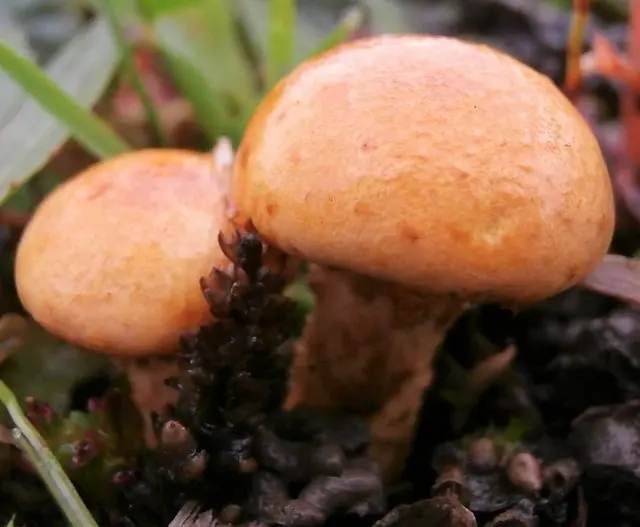
head: up to 6 centimeters in diameter. Yellow-gold, lemon-yellow, sometimes with a darker, reddish-brown center. In youth, hemispherical, convex, then flat-convex, prostrate, with a lowered edge.
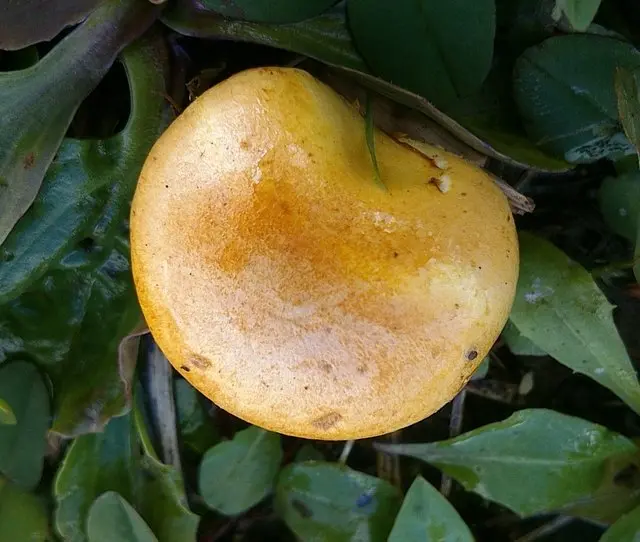
The cap of a young mushroom is covered with well-defined, sparse, elongated flat rusty scales. With age, the scales fall off or are washed off by rain, the hat remains almost smooth, reddish in color. The peel on the cap is sticky, sticky.
On the lower edge of the cap there are remnants of a private bedspread hanging in the form of a torn fringe.
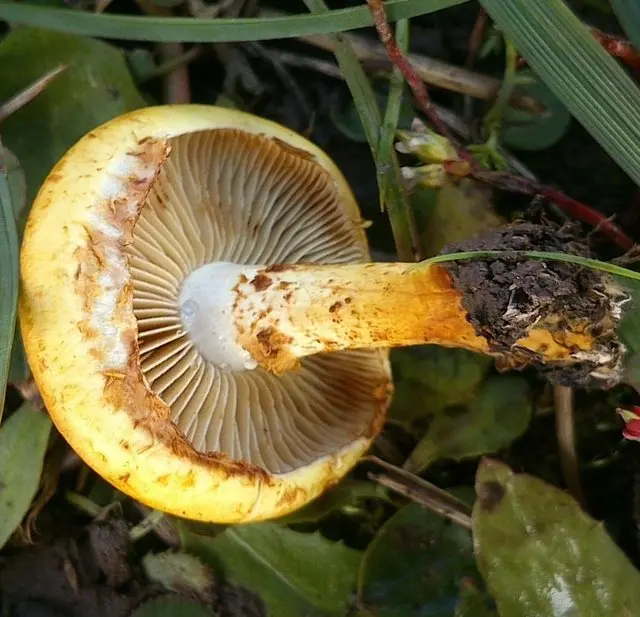
plates: weakly adherent, medium frequency. In youth, light yellow, creamy yellow, dull yellow, later darken, acquiring reddish hues. In mature mushrooms, the plates are brownish with dirty rusty-red spots.
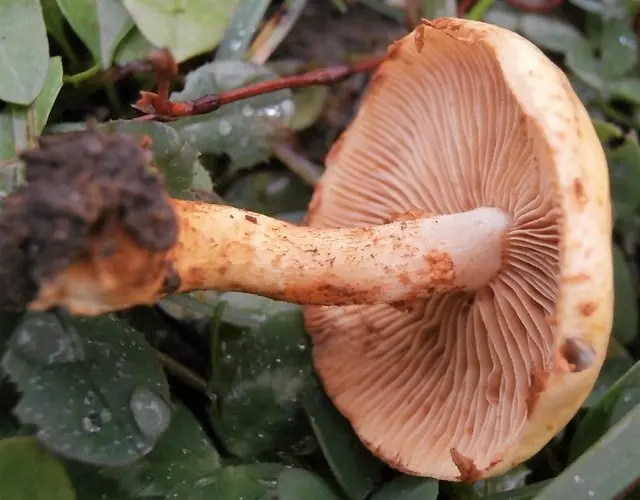
Leg: 1-5 centimeters long and 3-8 millimeters thick. Whole. Smooth, may be slightly thickened at the base. There may not be a “skirt” as such, but there are always remnants of a private veil in the form of a conventionally expressed ring. Above the ring, the leg is smooth, light, yellowish. Below the ring – the same color as the hat, covered with a fluffy, soft scaly coverlet, sometimes very well defined. With age, this coverlet darkens, changing color from yellow-gold to rusty.
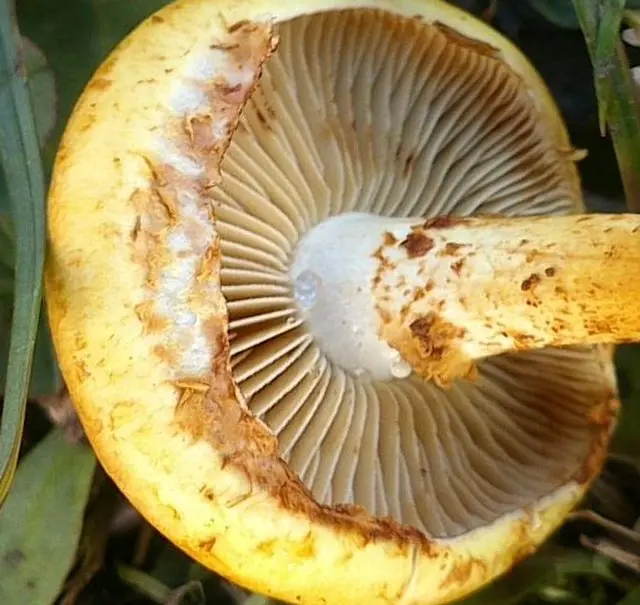
In the photo – very old mushrooms, drying up. The coverlet on the legs is clearly visible:
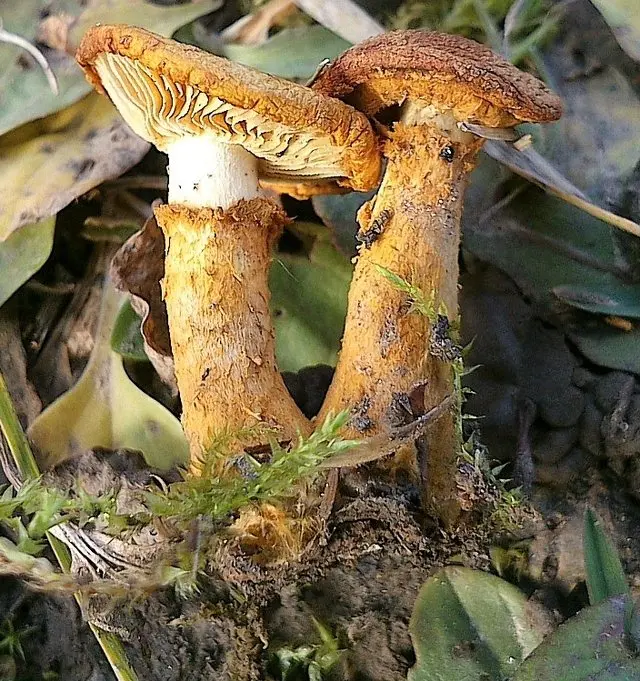
Pulp: light, white or yellowish, closer to the base of the stem may be darker. Dense.
Smell: almost indistinguishable.
Taste: bitter.
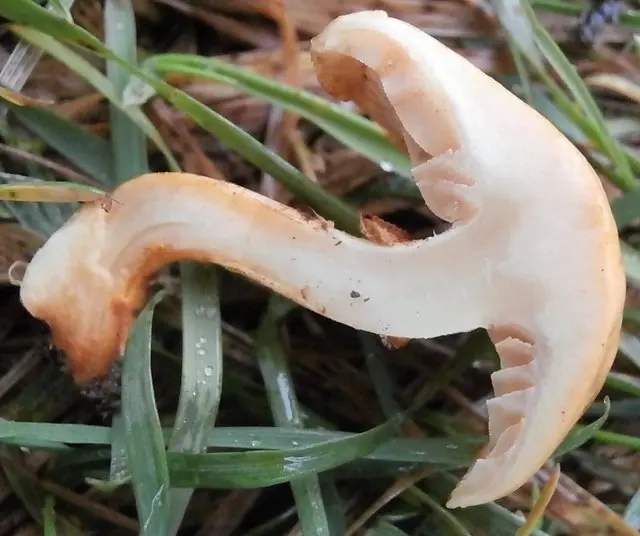
spore powder: brown.
Споры: ellipsoid or bean-shaped, smooth, 7-8 * 4-6 microns.
The mushroom is not poisonous, but is considered inedible due to its bitter taste.
Widely distributed in Europe, found from mid-summer (July) to autumn (September-October). Grows in forests of any type, can grow in open spaces; on leaf litter or rotting wood buried in the ground.
Photo: Andrey.









